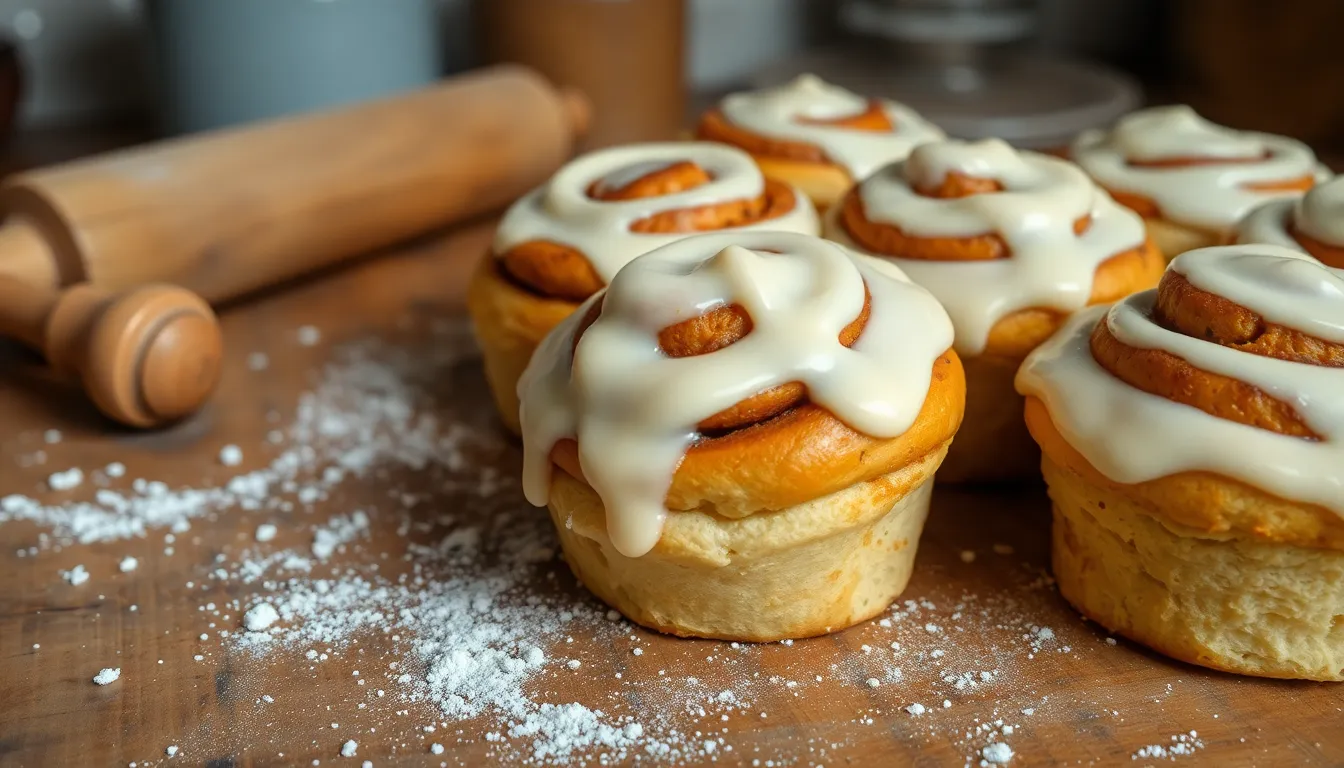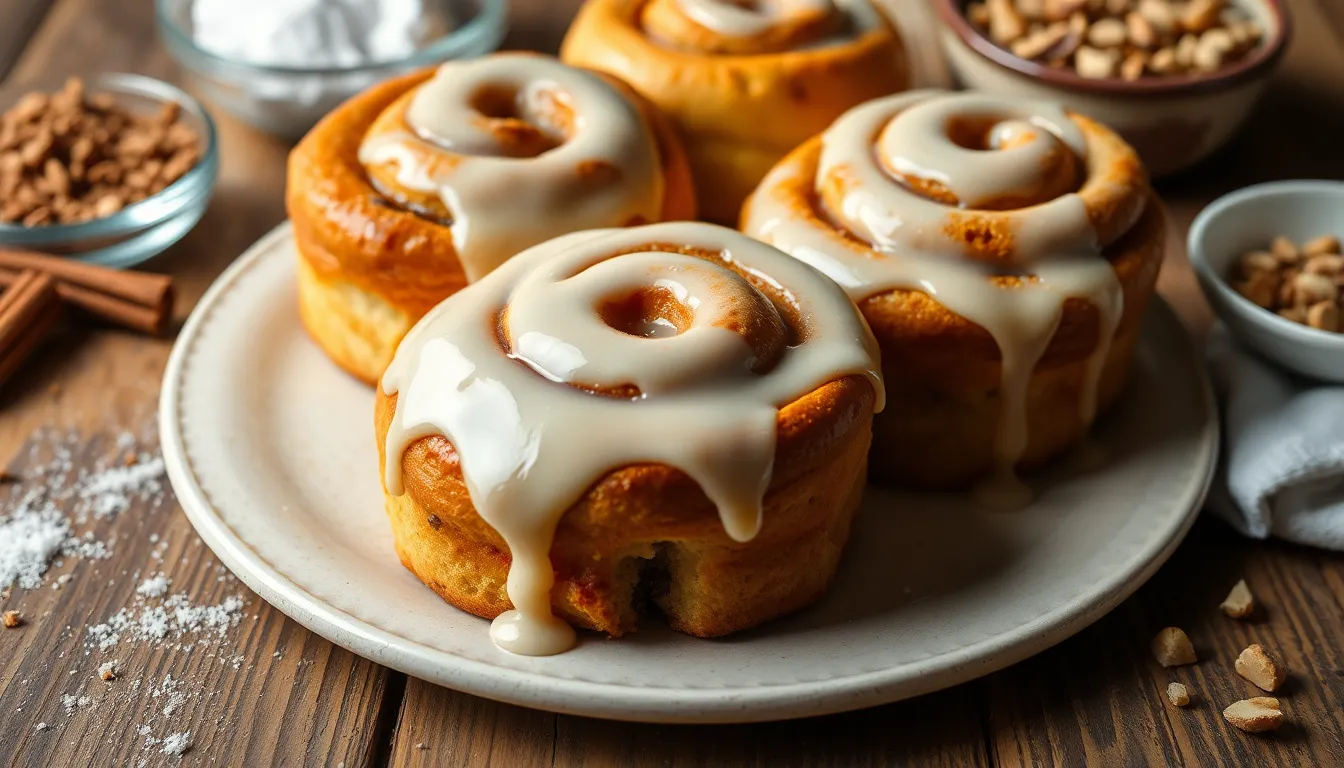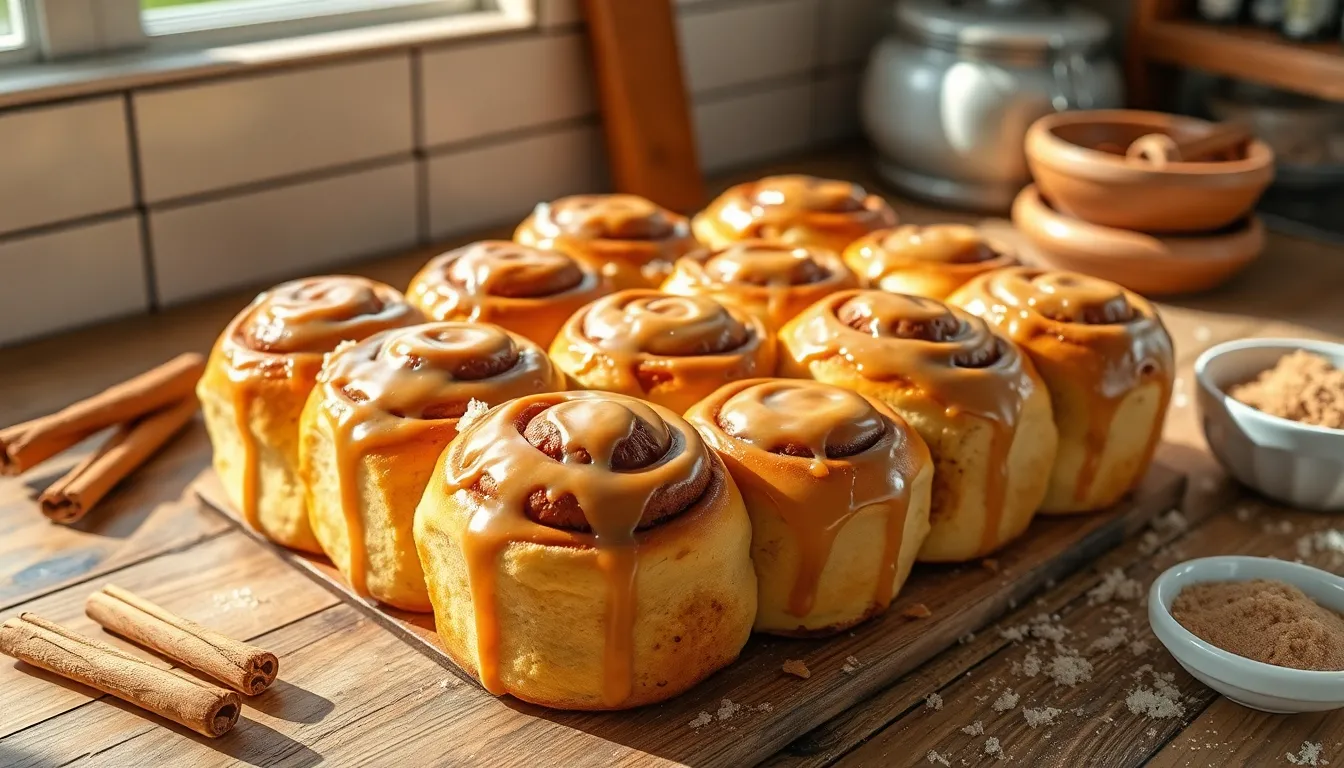Cinnamon rolls are the ultimate comfort food, but let’s be honest—sometimes they just don’t hit the spot. Maybe they’re too doughy or lack that sweet, gooey goodness. Fear not! With a sprinkle of creativity and a dash of culinary know-how, anyone can elevate these beloved treats from basic to mind-blowingly delicious.
Table of Contents
ToggleUnderstanding The Basics Of Cinnamon Rolls
Cinnamon rolls rely on specific ingredients and dough techniques to ensure optimal flavor and texture. A few adjustments can elevate these beloved treats significantly.
Ingredients That Make A Difference
Quality ingredients transform cinnamon rolls. Fresh, high-quality cinnamon enhances the flavor profile. Brown sugar adds a moist consistency and a deeper sweetness. Using cream cheese in the frosting provides a tangy balance against the sweetness. Incorporating vanilla extract in the dough deepens the overall taste. Finally, a pinch of salt enhances all the flavors, creating a well-rounded treat.
Choosing The Right Dough
Selecting the right dough proves crucial for the perfect cinnamon roll. A rich, buttery dough, often enriched with eggs and milk, yields a soft, tender texture. It’s beneficial to allow the dough to rise properly, ensuring air pockets form and enhance the final product’s fluffiness. Using bread flour instead of all-purpose flour increases protein content, resulting in a chewier texture. Utilizing a mix of milk and water for hydration leads to a balanced dough that is neither too dry nor too wet.
Key Techniques For Improvement


Improving cinnamon rolls involves perfecting the dough and elevating the filling. Both techniques significantly enhance flavor and texture.
Perfecting The Dough
Using high-quality bread flour ensures a soft and chewy texture. Enriching dough with ingredients like eggs and milk contributes to richness and tenderness. Allowing sufficient time for rising develops a light and airy roll. Incorporating a blend of yeast and sourdough starter can introduce complex flavors. Kneading the dough until smooth provides the right elasticity, essential for shape retention. Chilling the dough before rolling enhances its manageability, creating less stickiness.
Elevating The Filling
Opting for fresh ground cinnamon amplifies flavor intensity. Mixing brown sugar with cinnamon produces a delightful caramelized effect during baking. Adding a touch of vanilla extract enriches the overall taste profile. Incorporating chopped nuts or dried fruits introduces extra texture and flavor layers. Enhancing the filling with a pinch of sea salt balances sweetness. Using softened butter allows for an even spread, ensuring uniform flavor distribution throughout the rolls.
Topping and Glazing Options
Cinnamon rolls can reach new heights with the right toppings and glazes. Choosing the right finish enhances taste and visual appeal.
Cream Cheese vs. Traditional Icing
Cream cheese frosting offers a tangy contrast that complements sweetness perfectly. Many prefer this option for its rich texture and flavor. Traditional icing, on the other hand, provides a classic sweetness with a glossy finish. Each choice suits different palates, and both can elevate cinnamon rolls significantly. Experimenting with ratios can allow for perfectly balanced flavors.
Enhanced Flavor Combinations
Incorporating unique flavors makes cinnamon rolls more exciting. Adding maple syrup or bourbon into the cream cheese frosting introduces warmth and depth. Infusing glazes with citrus zest or almond extract creates refreshing notes that tantalize taste buds. Sprinkling crushed nuts or toasted coconut on top adds crunch and flavor variety. Each combination enriches the overall experience, making every bite memorable.
Tips For Baking Success
Baking cinnamon rolls requires attention to specific details for optimal results. This section highlights essential tips to ensure success.
Temperature and Time Considerations
Monitoring temperature and time is crucial for perfect cinnamon rolls. Dough should rise in a warm, draft-free area for 1 to 2 hours until it doubles in size. Using an oven set to a low temperature can create an ideal environment for rising. Baking cinnamon rolls requires an accurate oven temperature; 350°F works best for achieving a golden-brown exterior. Timing plays a significant role too; typically, rolls need 20 to 25 minutes in the oven. Checking for doneness before removing them ensures a soft, fluffy texture without under or overbaking.
Storage and Reheating Tips
Proper storage extends the freshness of cinnamon rolls. Leaving them out at room temperature for up to two days keeps them soft and tasty; cover them with plastic wrap or aluminum foil. For longer storage, placing rolls in an airtight container and refrigerating extends freshness for up to a week. Reheating leftover cinnamon rolls restores their original warmth and texture. Using a microwave for 10 to 15 seconds warms them effectively, while an oven set to 350°F for 5 to 10 minutes provides a freshly baked experience. Enjoying them warm enhances flavor and texture, ensuring a delightful treat every time.
Transforming cinnamon rolls into a delightful treat is all about attention to detail and creativity. By focusing on quality ingredients and perfecting the dough, anyone can elevate these classic pastries. Incorporating unique flavors in the filling and toppings can add a personal touch that impresses family and friends.
Understanding the importance of proper rising and baking techniques ensures the rolls achieve that coveted soft and fluffy texture. With the right approach to storage and reheating, these sweet delights can be enjoyed fresh for days. Embracing these tips will lead to cinnamon rolls that are not just better but truly unforgettable.







